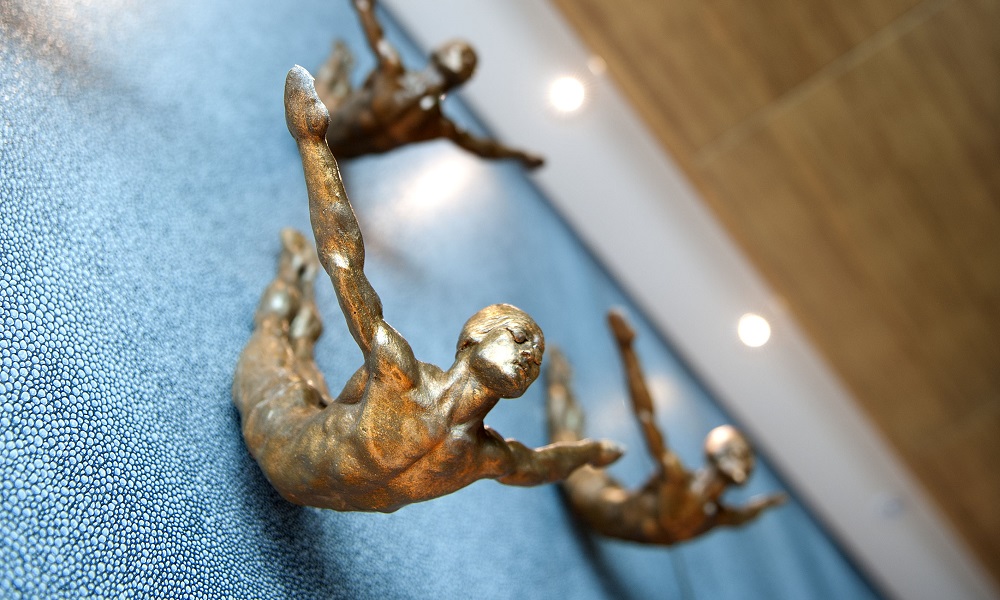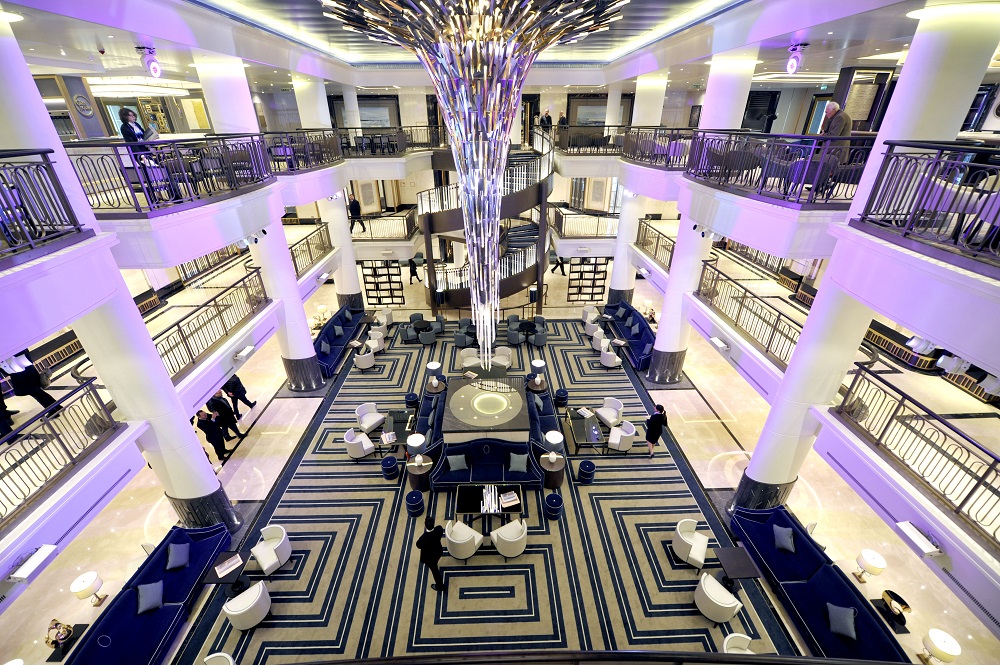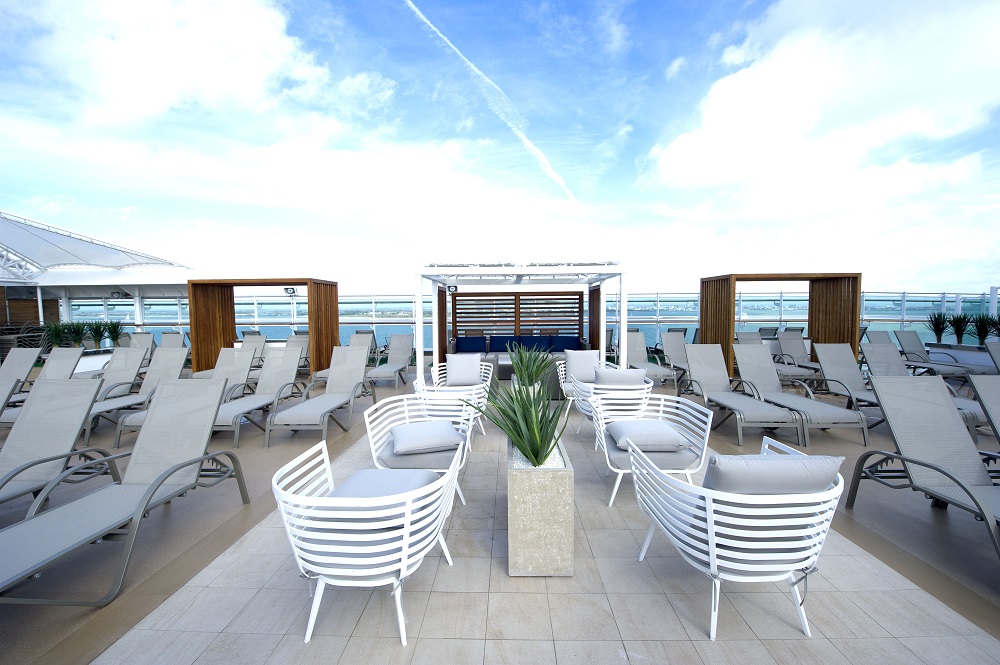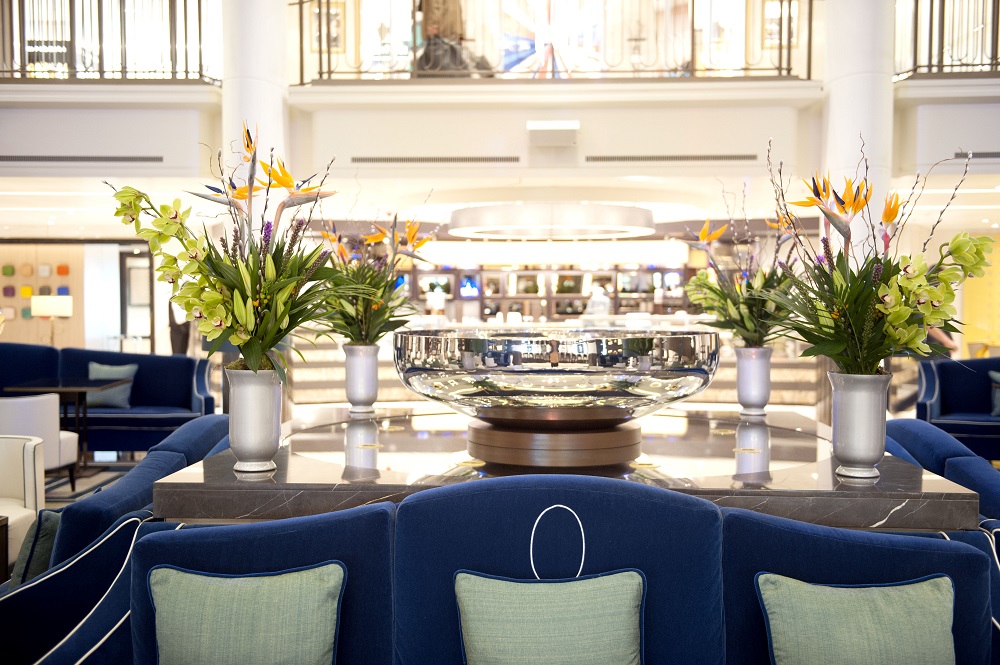Interview With Alison Clixby
Alison Clixby, Director of Hotel Design and Projects for Cunard and P&O Cruises
When we met Alison at an event celebrating plans for a brand new ship in the P&O Cruises fleet in 2020, we couldn’t let the opportunity to interview the woman behind its interior design pass us by.
Alison, thanks for finding the time to chat with us at what must be a busy period for you and the rest of the design team. Has work yet commenced on the design of what will be the largest and most ambitious ship in the P&O Cruises fleet?
Hi, it’s a pleasure! We have been working through the summer on some preliminary development plans and concepts, and now the project is live we have, just this month, started the outline design work and will be producing the first set of layout drawings in early 2017.
When describing the typical British cruise passenger, P&O Cruises Senior Vice President Paul Ludlow and Carnival CEO David Noyes said: “We want to be abroad, yet feel at home. We like things new and improved, whilst feeling everything is as it always has been, and we don’t like big and brash, but we do like new and inspired.” How will the design of the new P&O Cruises ship reflect this?
We are beginning to formulate the design response to meet this part of our brand guideline. We are going to be drawing on the timeless elegance of the P&O Cruises fleet, with touches of tradition and classic British design that will give us a sense of place and being at home. We also want to deliver forward-thinking designs that reflect how we aspire to holiday and interact on an individual and family basis now and in the future, so the layout of spaces and people flow around the ship will be as important as the interior design aesthetic. The new ship will reference Britannia in part but will naturally evolve into a more contemporary style because of the different platform and features available for design development.

David Noyes also suggested that the design will focus heavily on bringing the outside in. Why do you think this is becoming increasingly important on board cruise ships and how will the use of colour and materials reflect this?
To celebrate and be aligned with the natural rhythm of the sea and to bring the outside in conceptually is one of our core design considerations. For me, it’s important because being at sea and surrounded by this changing canvas of a tranquil or wild natural environment is such a key differentiator from land based holidays. We can employ design techniques, such as the use of reflective materials, to emphasise and enhance the open expanse of sea and light and views. Due to the scale of this ship, it will be very important to draw as much light as possible into the centre; so of course we will be maximising window and glazing features wherever possible and creating vertical volumes and connections to uplift the interior spaces.
The ship will be the most environmentally-friendly in the P&O Cruises fleet, the use of Liquefied Natural Gas (LNG) dramatically reducing emissions. You have previously described transforming the ecological footprint of cruising as your ‘pet project’; will this eco-friendly brief translate to the ship’s interior too?
There is a sustainability gap in interior design in general and consequently for the cruise industry; we are focused on complying with demanding maritime standards for fire and toxicity, but it’s currently hard to find information on the provenance of products and enough materials that have a green certificate and also meet IMO (International Maritime Organisation) standards.
The last 3 years working for P&O Cruises/Carnival UK and gaining an understanding of the consequences and impact of material specifications and design detailing has been an eye-opener and has helped me recognise the importance of environmental sustainable interior design. Traditionally, interior design is successful if it meets an aesthetic and functional brief, but I am now looking to take my more recent learnings into this new build; to not only consider the aesthetic and regulatory qualities of a material or design, but also the ease of instalment and maintenance as well as initial and life-cycle costs. At the moment, with few materials having both green and IMO certificates, I don’t think we will be transformative in eco-friendly design but we will be working with our design team and suppliers to minimise negative impacts on the environment and people over the lifecycle of this and other projects.
You previously headed up not only the design of P&O Cruises’ Britannia, but also Cunard’s QM2 Remastered project and, in this coming December, the refurbishment of Oriana. Does industry and guest feedback from previous projects play a large part in influencing future builds?
Absolutely, guest feedback and satisfaction is the most significant factor in determining future changes and developments, not only at new-build but also refits. We are less influenced by industry feedback as we are developing a specific product and environment for our P&O passengers.

P&O Cruises has suggested that the aim of the new ship is to attract newcomers, whilst also resonating with existing guests and retaining the much-loved – very British – appeal of the fleet. How will its design merge the two?
It’s difficult to describe in words because I think it’s almost intangible until you walk into a space and immediately know if you’ve captured the right spirit and balance (between new and existing passenger appeal). To help us with this we have purposefully selected a range of designers to deliver a combination of new to cruise cutting edge British architecture and classic hospitality interior design.
The ship will also be the largest in the fleet, accommodating 5,200 passengers. What tricks of the trade do cruise ship designers use when it comes to maximising the space on board?
Well you don’t go far wrong if you follow the design mantra ‘form follows function’ but it’s a very pertinent question at this stage in our planning process. Once we’ve captured the product, operational and structural requirements, we then work on challenging them and finding ways of combining resources or functionality where it doesn’t have a negative impact, as well as finding clever design solutions so a space can transform and transition to ensure that its use is fully optimised. We do need to temper this obsession to use every sq.cm by sculpting spaces and allowing an ebb and flow between smaller, quiet or private spaces and vibrant and engaging environments which directly influence the passenger journey and experience. It’s through this careful consideration and continuous refinement of different factors that we maximise space.

What are the main differences between designing cruise ships and designing land-based hotels and resorts?
There are many but here are my top 3 differences:
- Land-based hotels obviously have a fixed location and often reference those locations in design detail. The ship changes location daily and can be based anywhere in the world, therefore have to have an appeal and style that suits any location and environment.
- Ceiling heights – I admit I would love to have the luxury of not having to consider the effects of low deck head heights!
- All products have to be selected or adapted to withstand constant movement and vibration. Chandeliers are one of the main items we spend a lot of time modifying to retain elegance whilst avoiding vibration and metal fatigue.
How does the design of public areas, such as entertainment venues and dining rooms, differ from that of suites and staterooms?
The main difference is the consideration of the personal vs. interpersonal space and providing a big wow factor, compared to a small, carefully considered detail that gives a wow for a completely different reason.

The ship will launch in 2020 and will remain on the oceans for many years after that. How do you create a design which is timeless yet contemporary, whilst also being capable of standing the test of time in terms of wear and tear from new guests arriving week-in week-out?
It’s vitally important not to design of the moment or to follow fashion or transient trends. Personally, I find the best way to design a timeless interior is to reference a well-defined and recognised architectural style, strip that back to its core elements and then construct the new interior using those elements as the basis for the design concept. This allows freedom to create a new design but it is less likely to date quickly. A good example of this approach is Aurora’s atrium, which I designed nearly 20 years ago inspired by colonial detailing and architectural principles; we simplified the decoration and focused on quality materials such as marble, wood veneers, solid bronze handrails for wear and tear and then added some more contemporary sculpted glass decorative elements to take the design forward yet remain timeless.
Lastly, we have all experienced that determination to replicate the décor or colour scheme of our stateroom or favourite lounge on board once we return home. What are your tips for creating that contemporary luxury feel at home?
Think about translating what you have seen to the scale of your space; how can you adapt it so it enhances your room rather than overwhelms it? Don’t try to shoehorn in all of the different design details, instead aim to whittle down to one or two key features that you liked so much – a combination of colours, a decorative screen, a bed throw or the style of a chair – make that item or detail the focus of your space and try to adapt or change other elements to sit less obtrusively around it. To achieve a contemporary luxury style, make sure finishes and materials are representative of their natural form (if using wood laminate instead of real timber, select something with a grain and matt finish rather than flat and shiny) and aim to layer up with different textures. And lastly, a make or break item is lighting; employ different light sources to allow you to change ambience.





